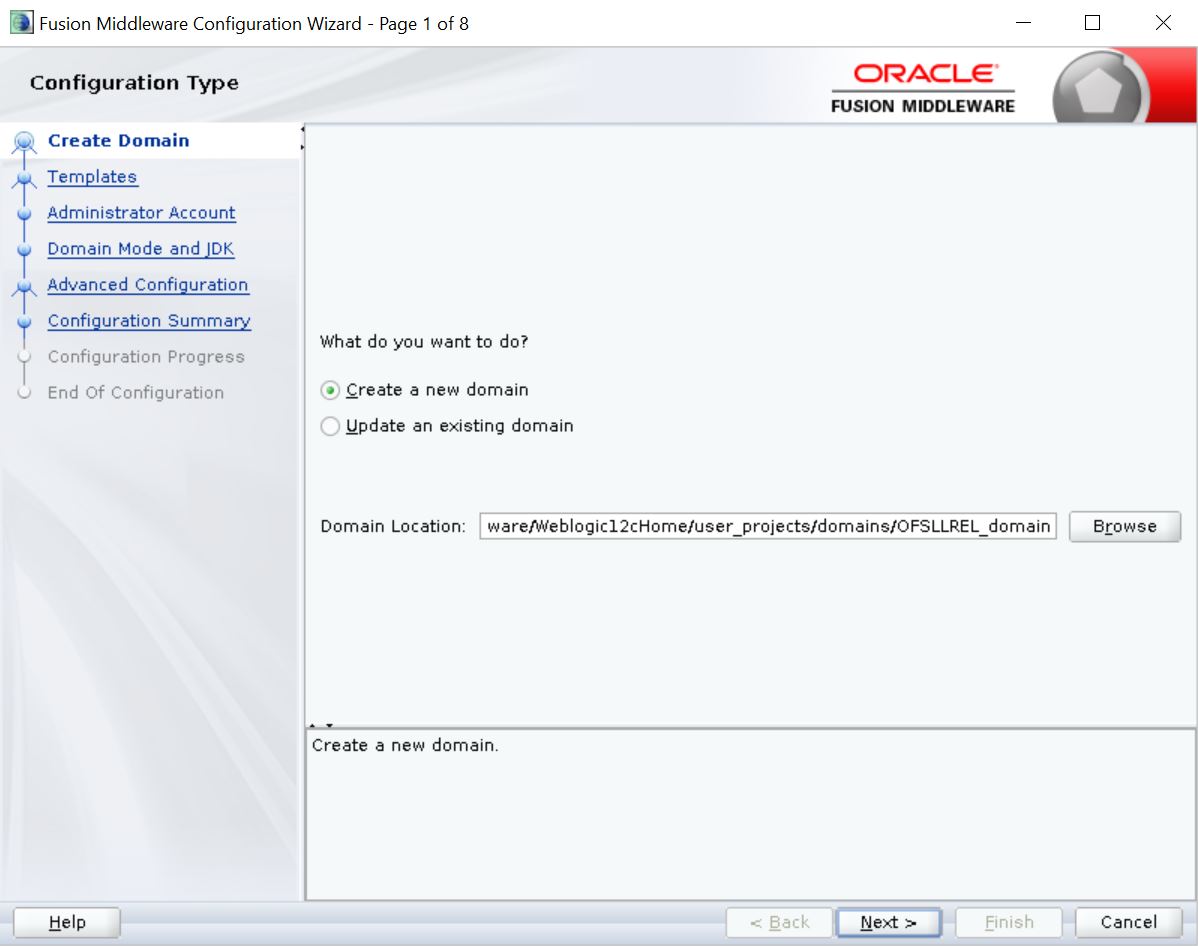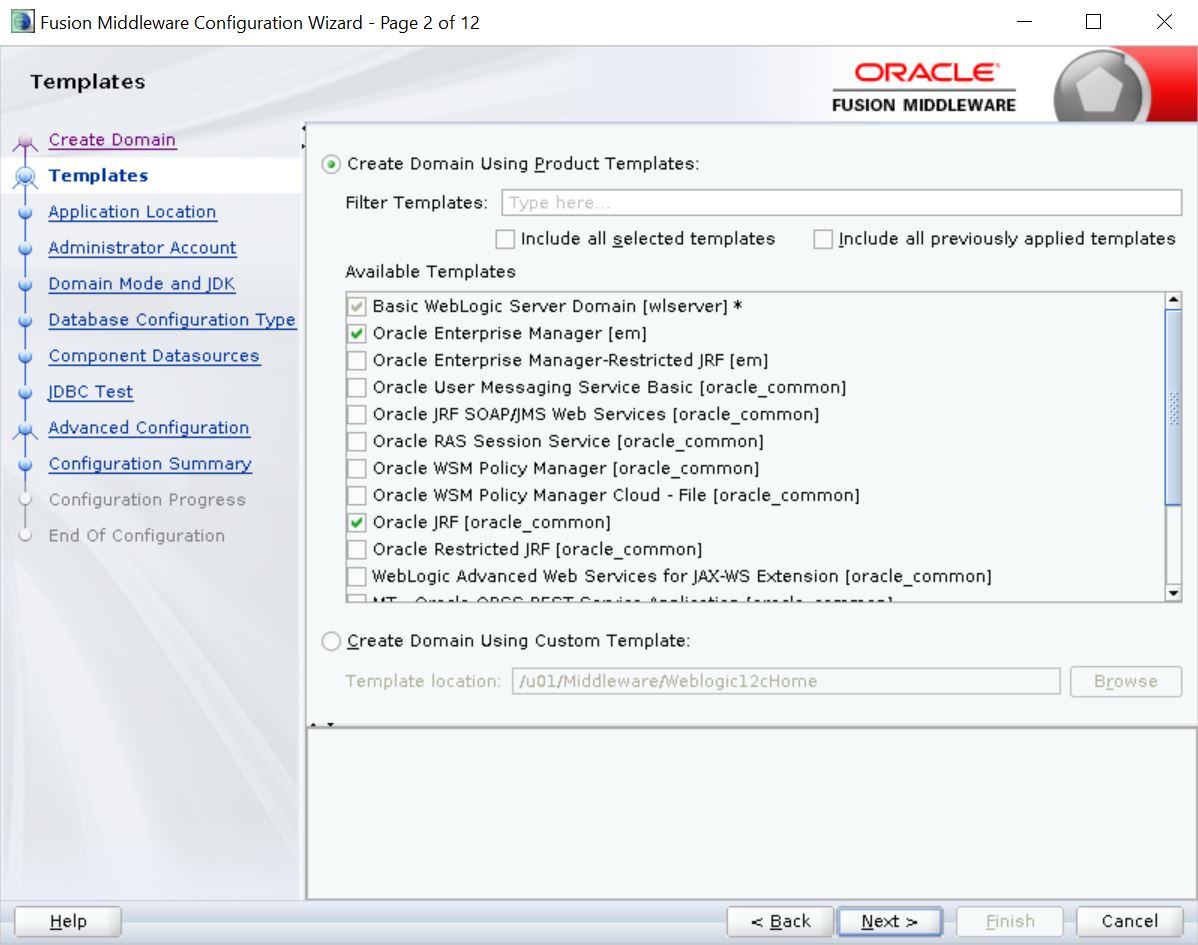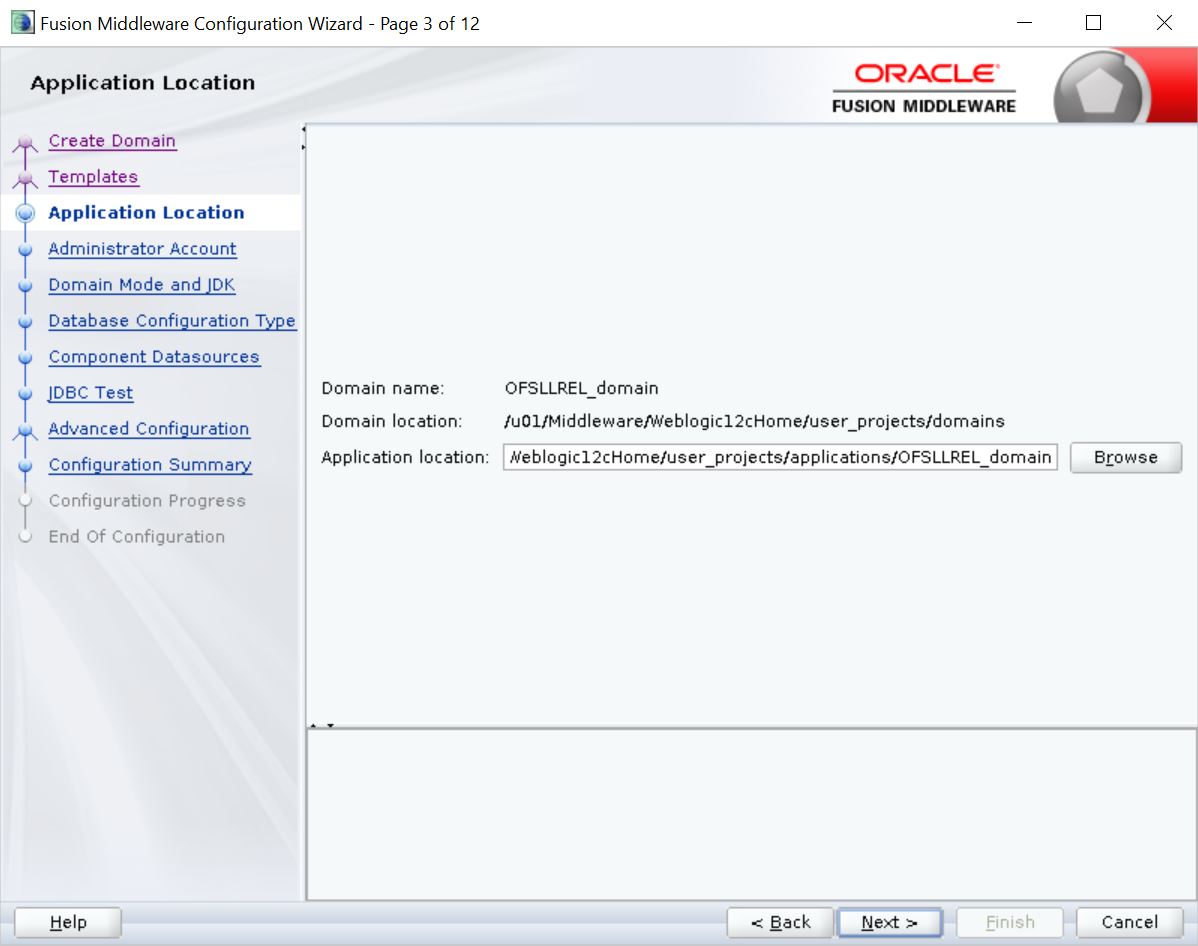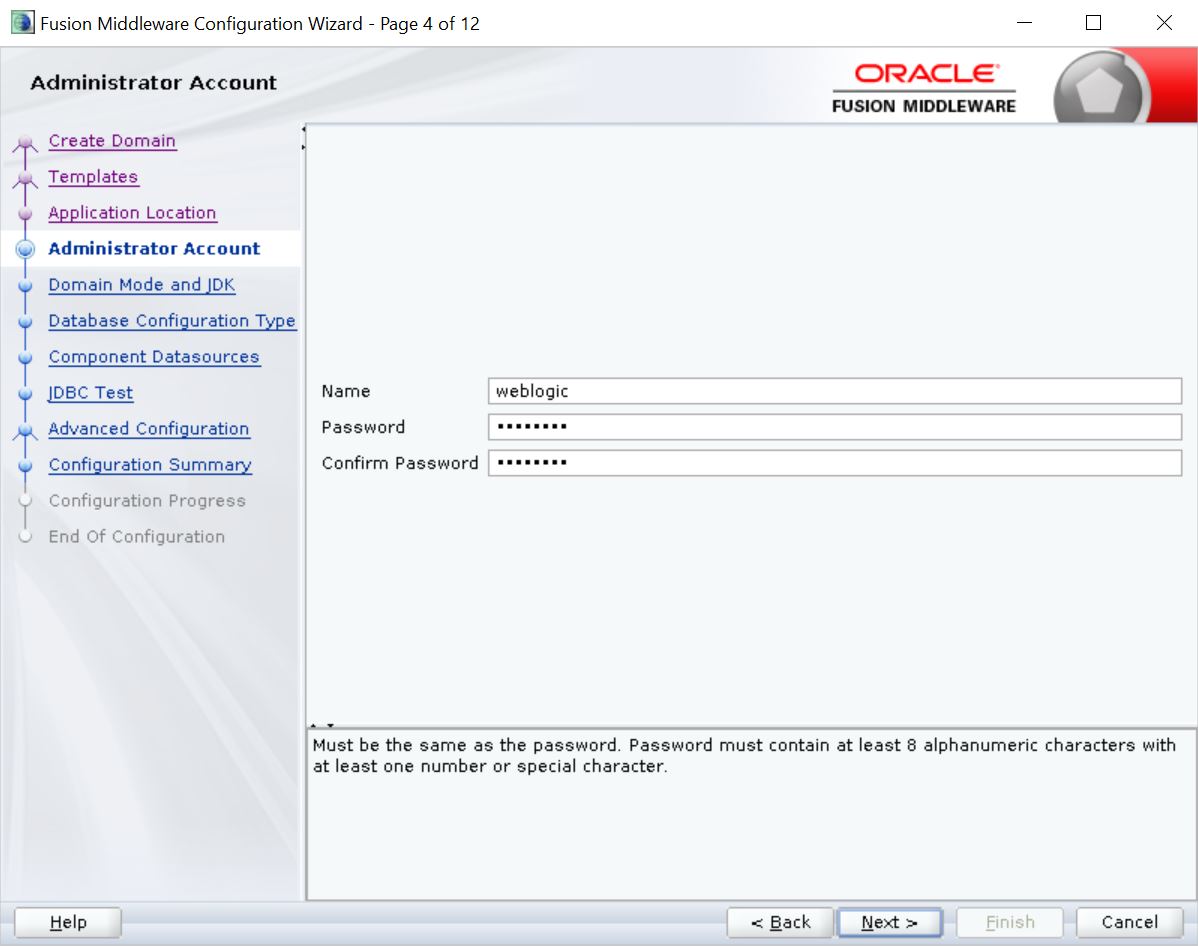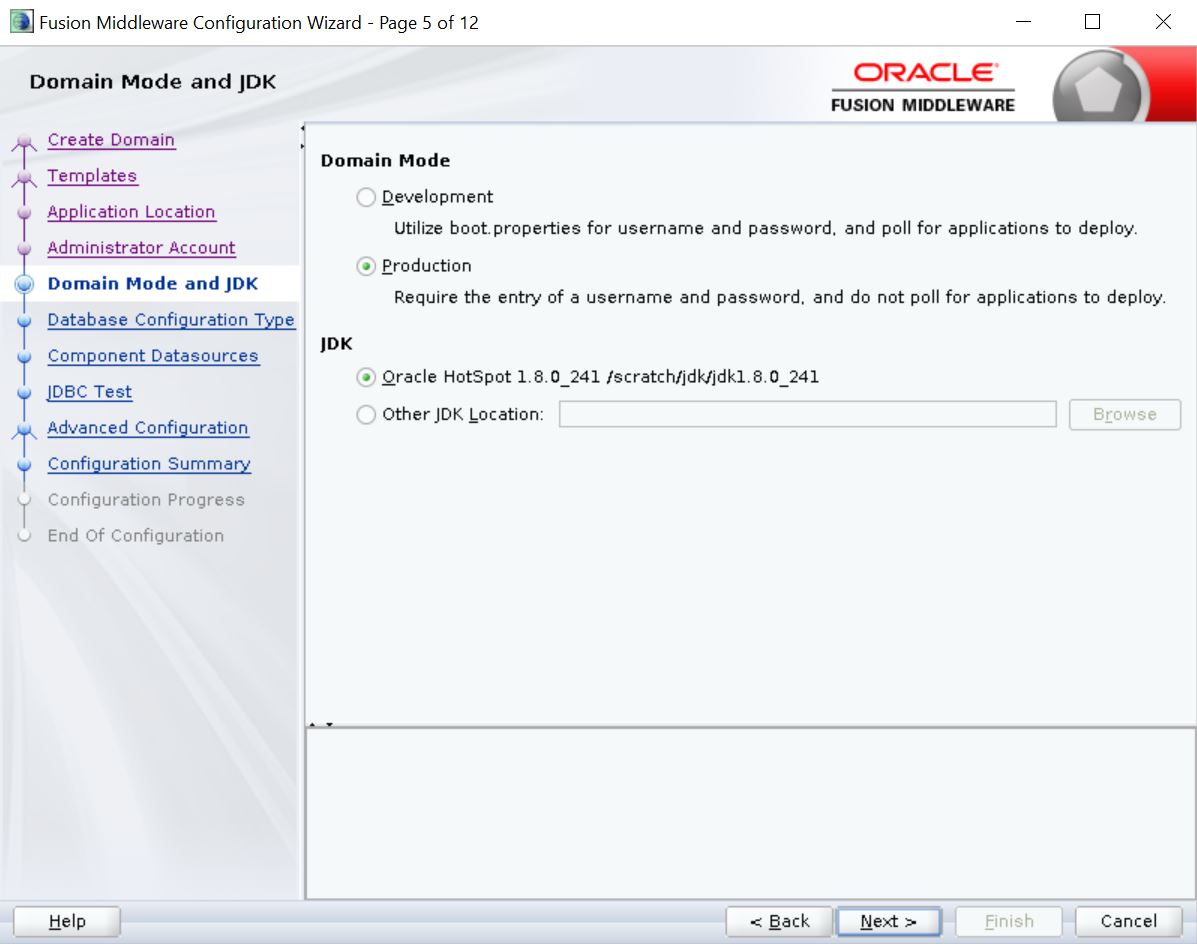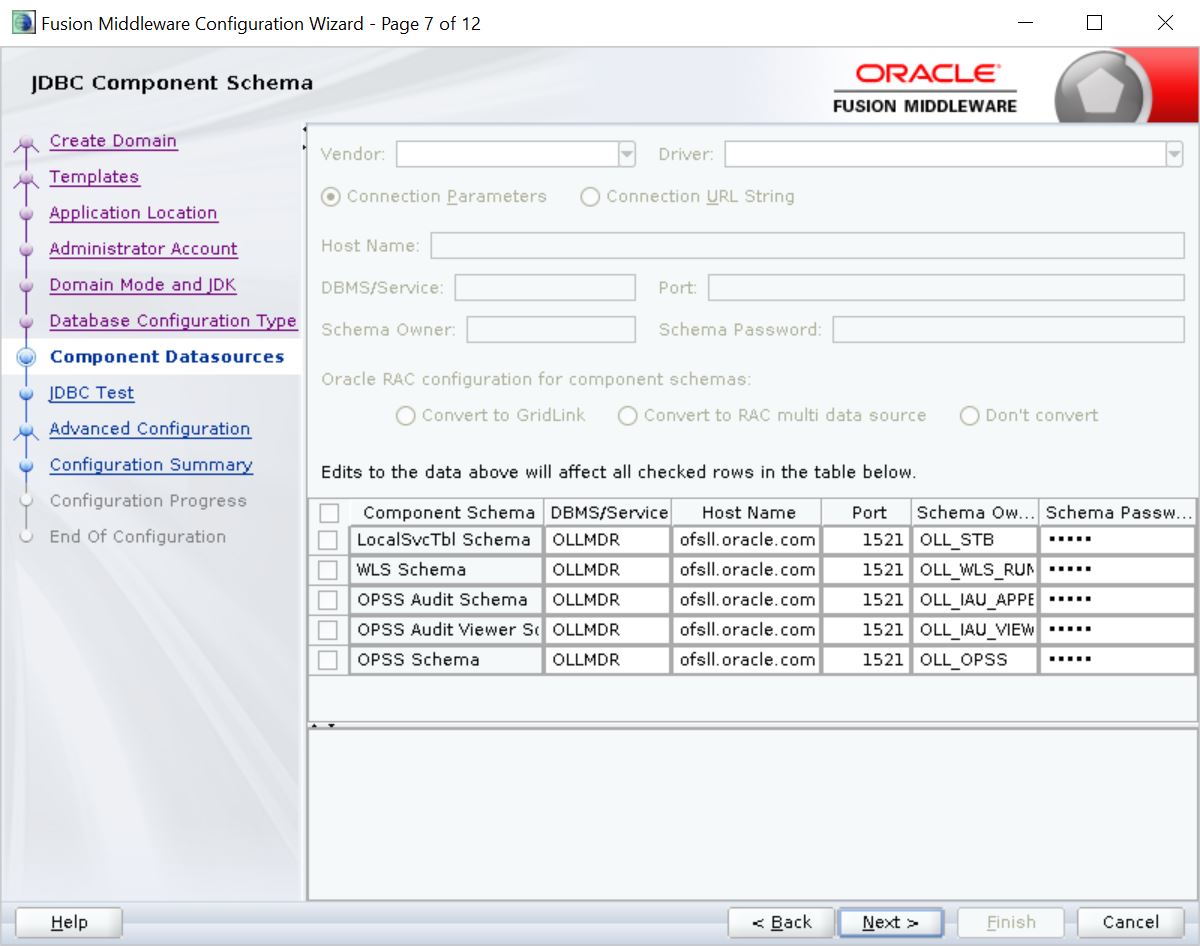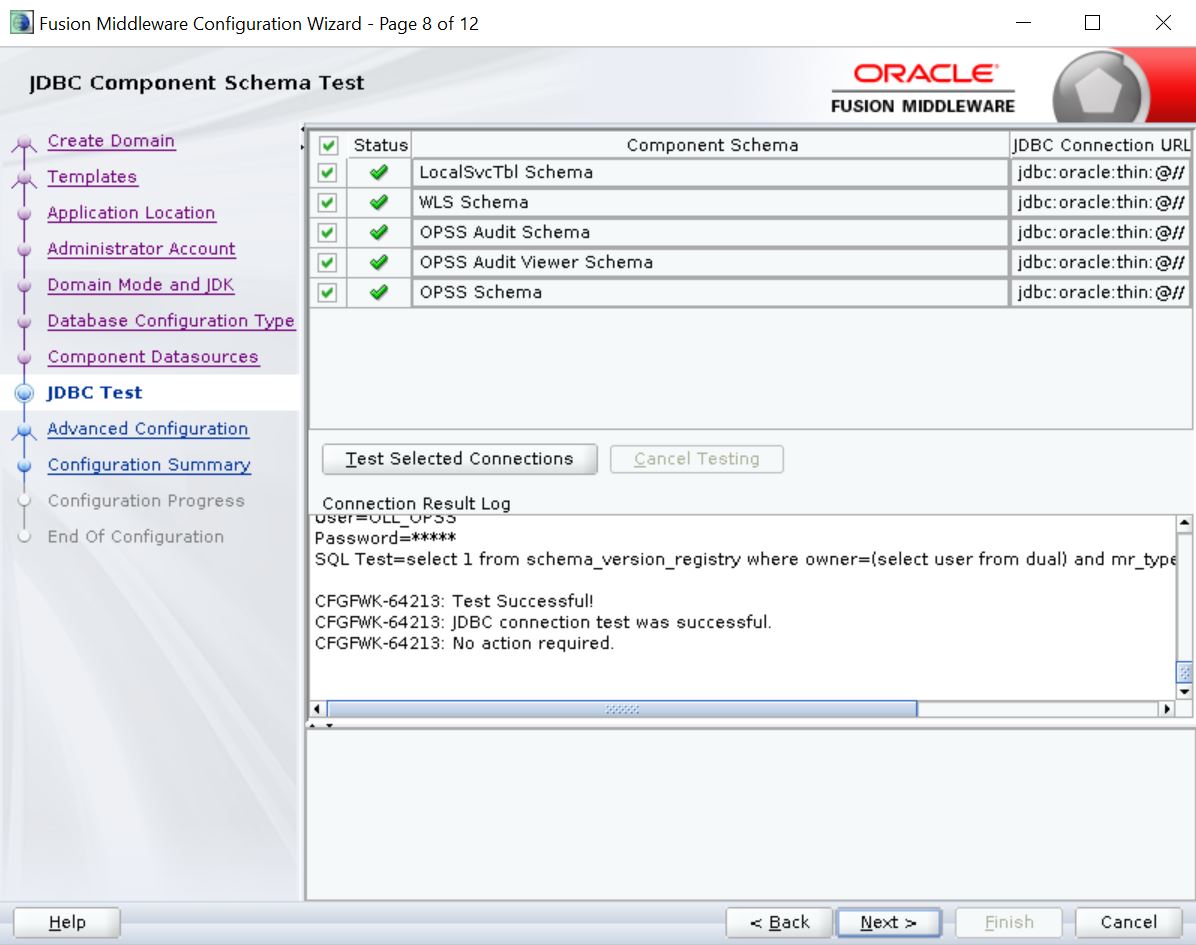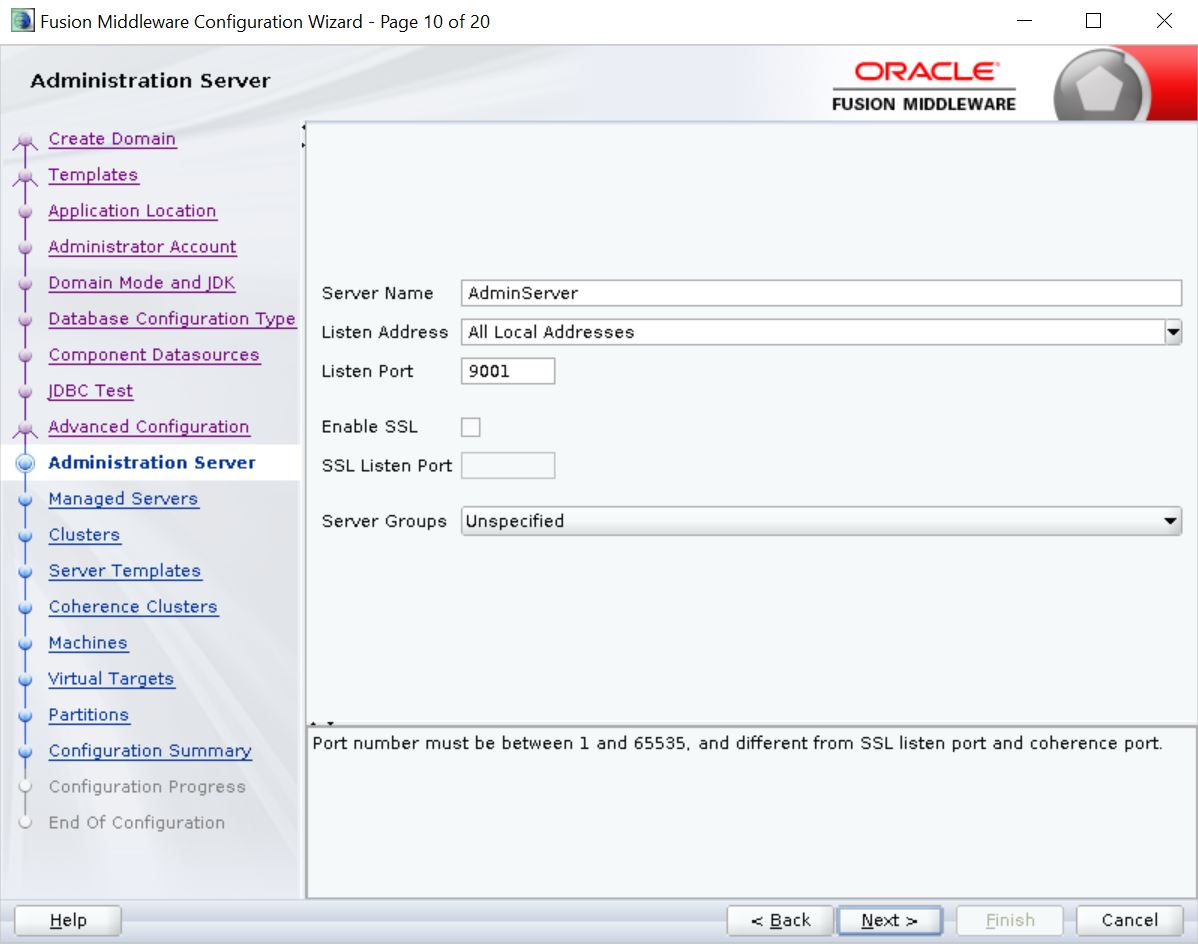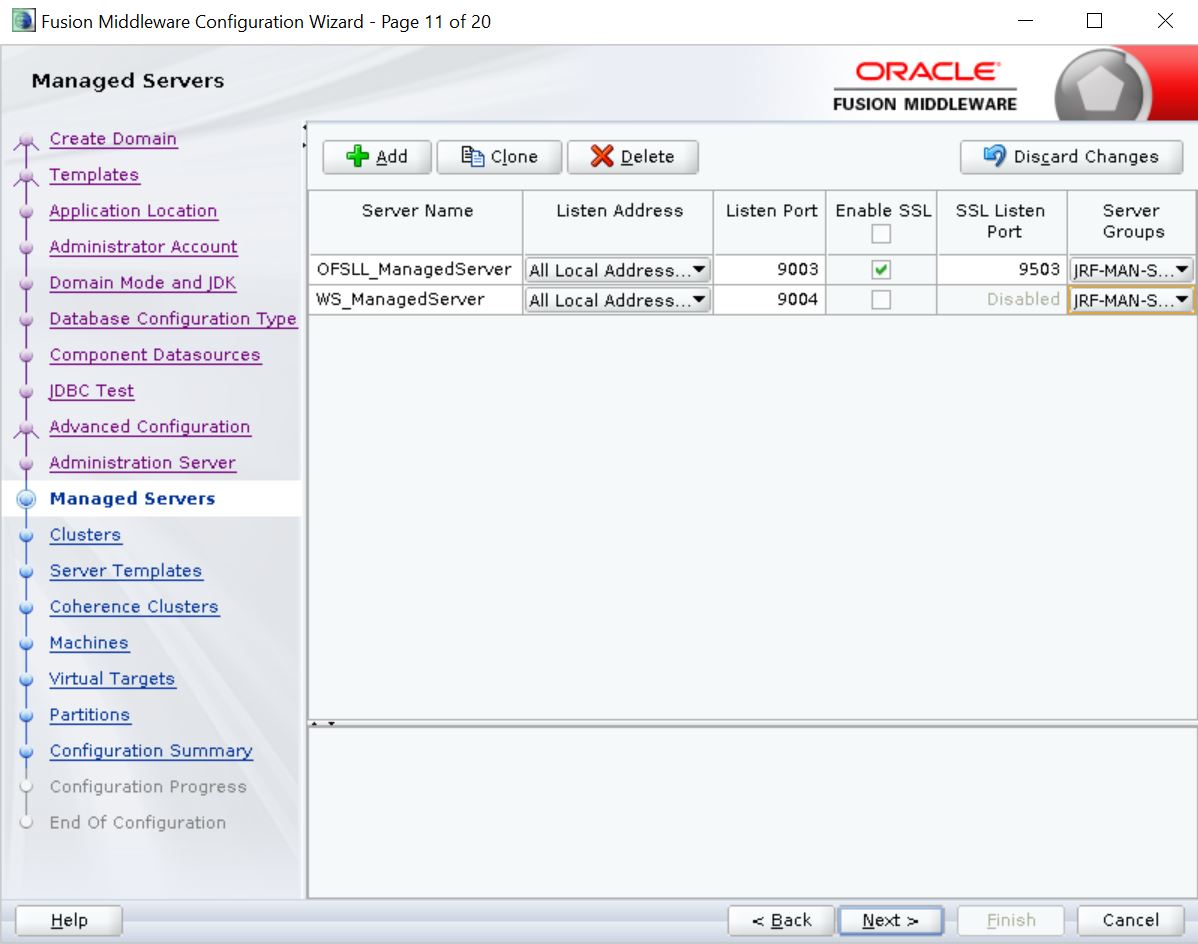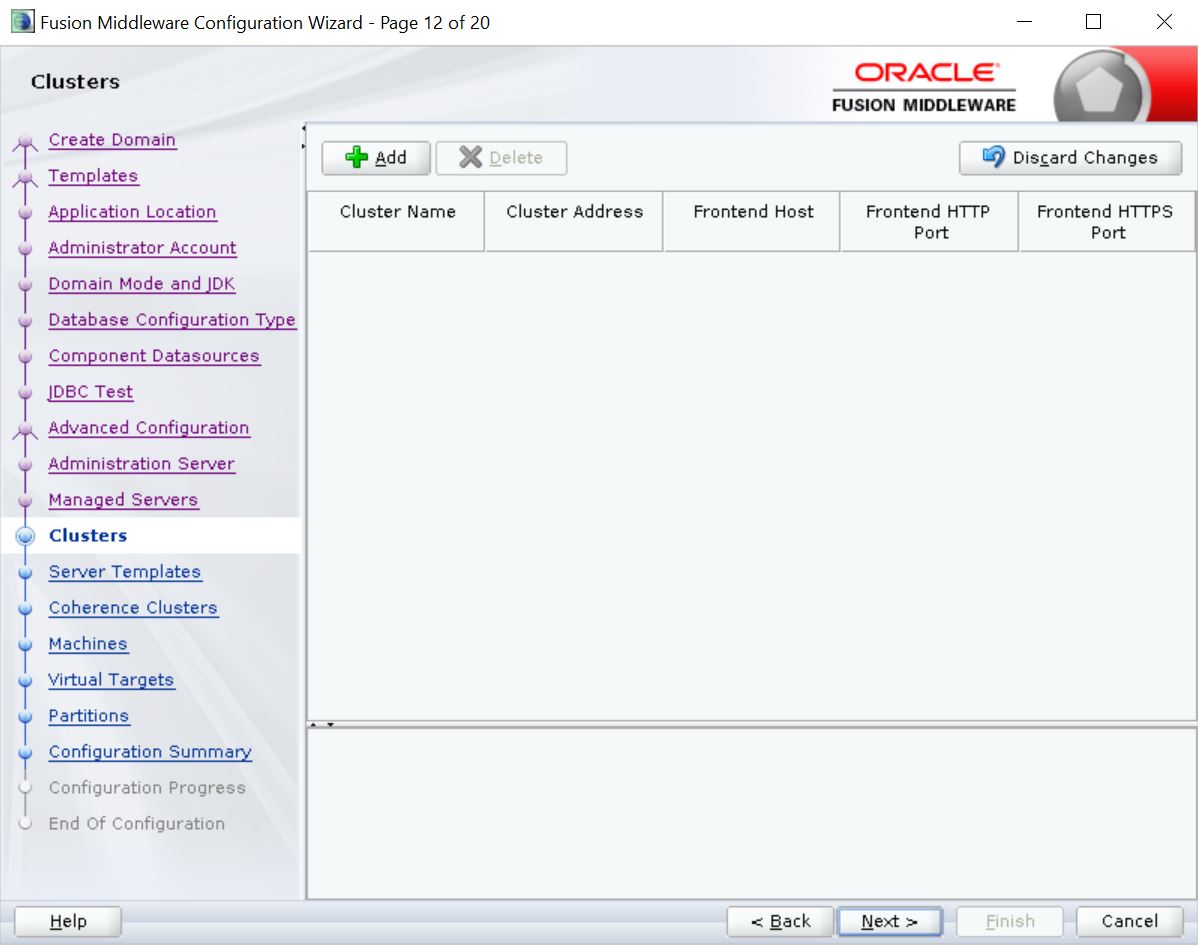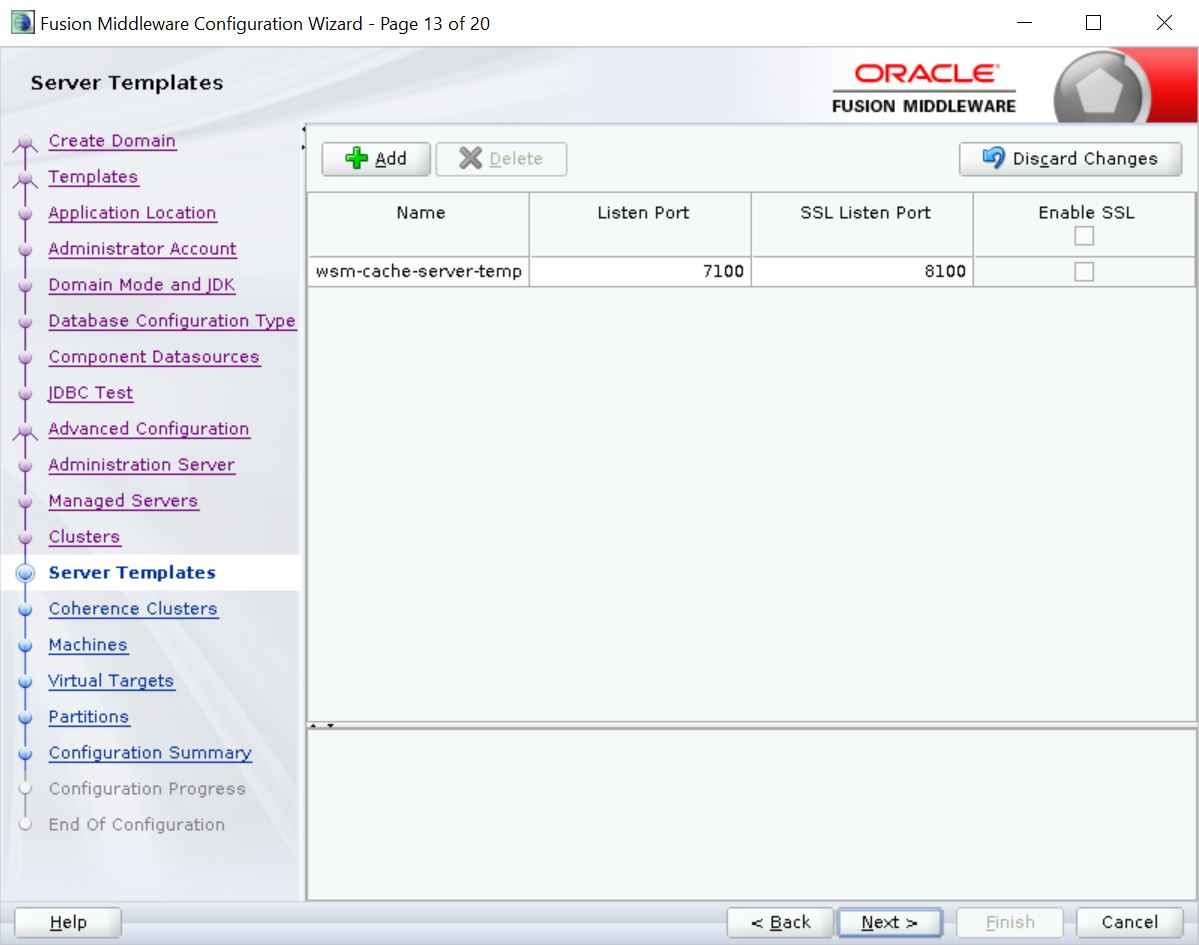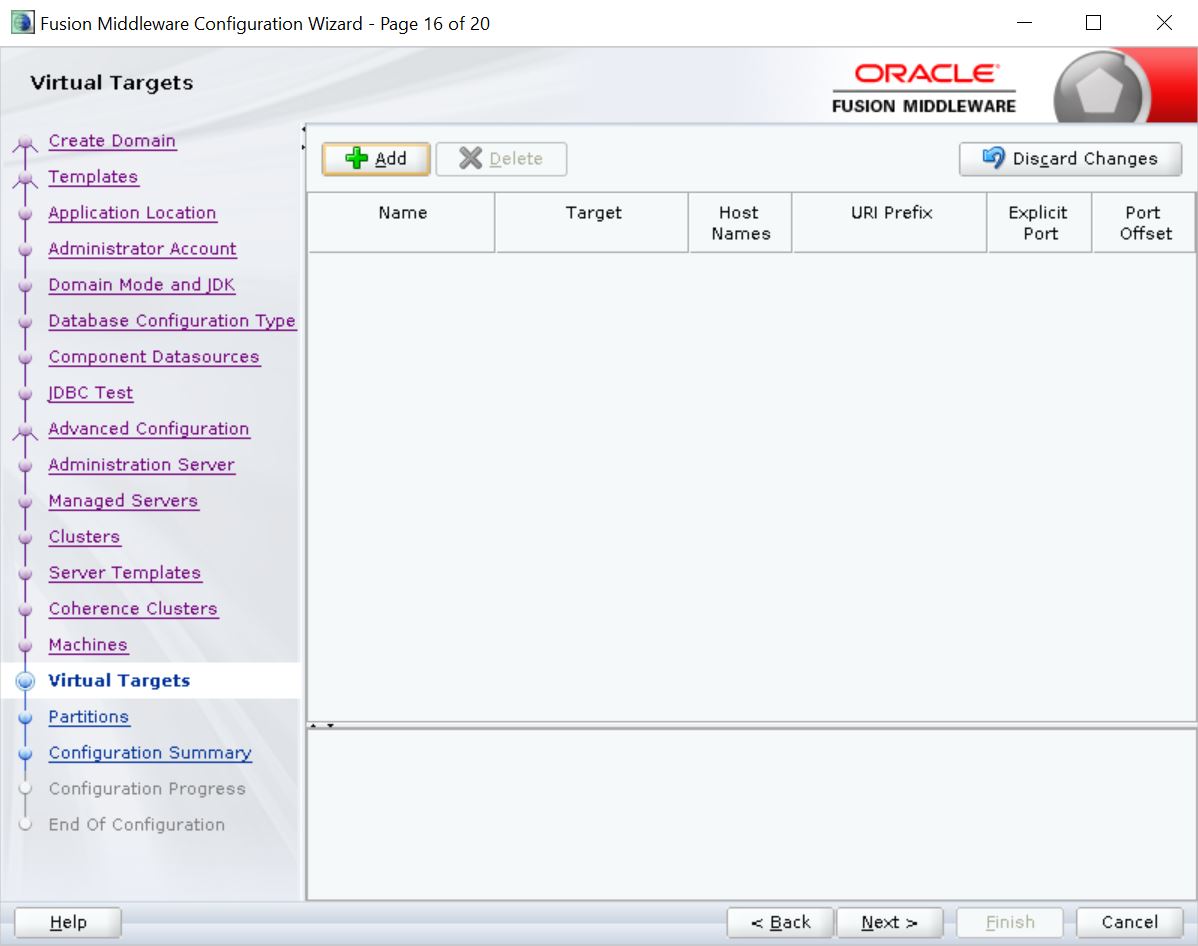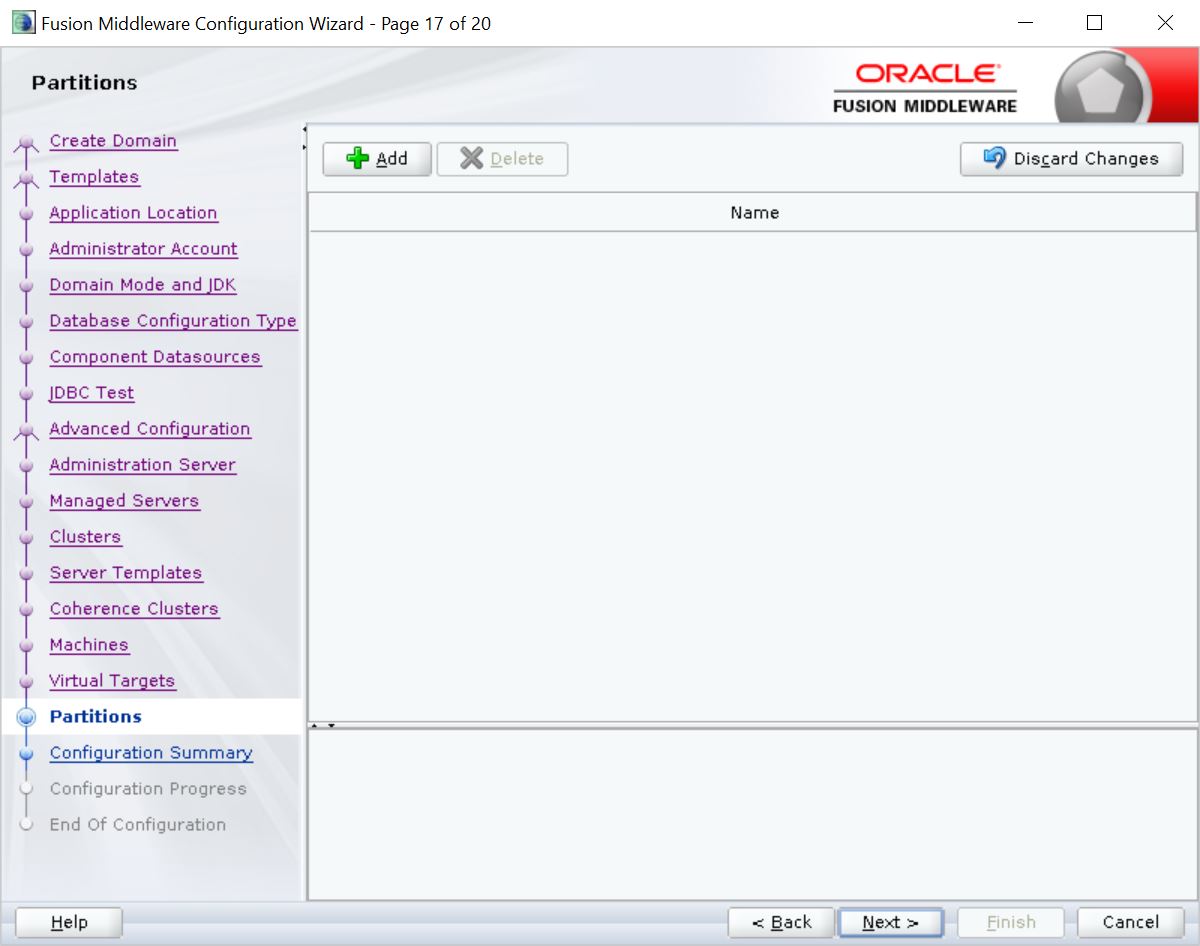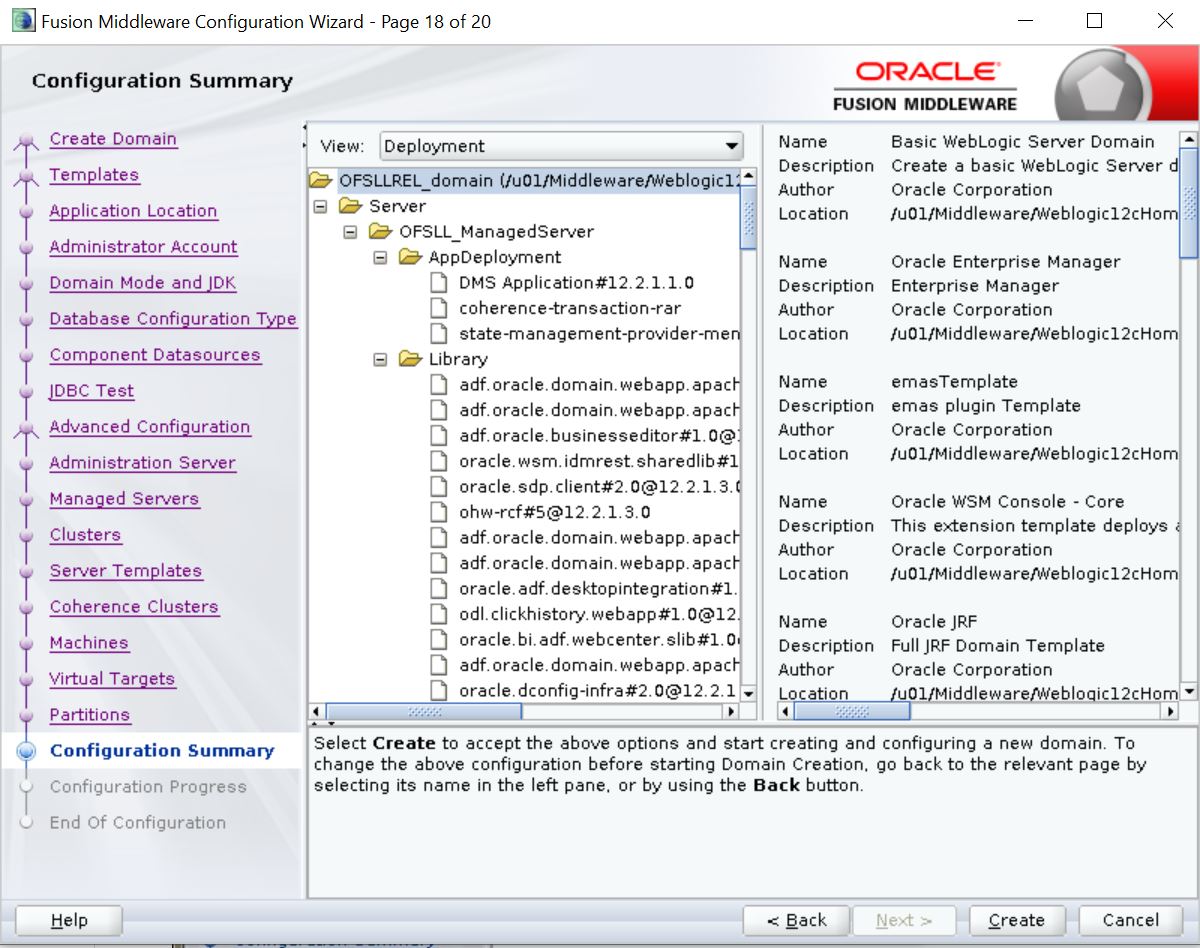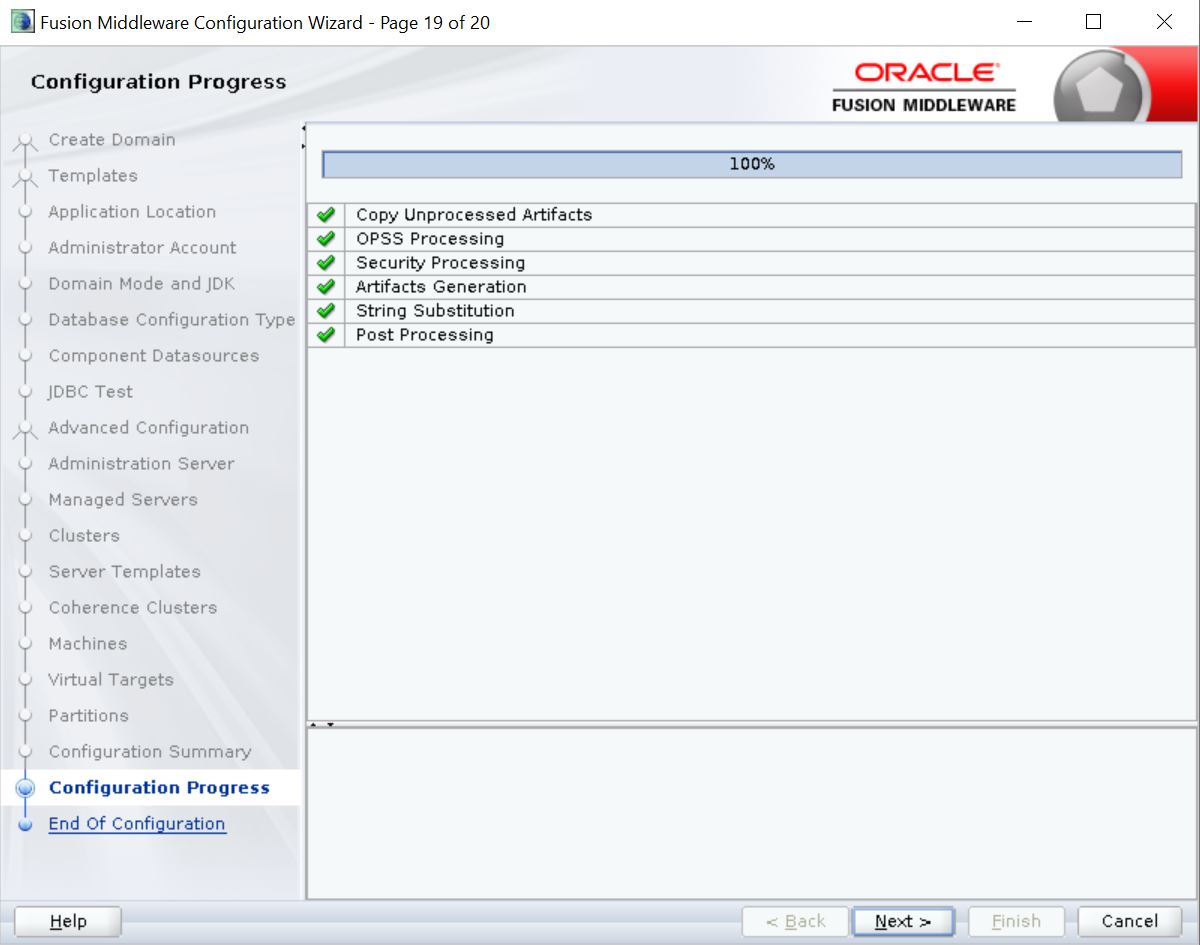- Application Installation Guide
- Create Domains, Repositories, Data Sources
- Creating Domain and Servers
2.2 Creating Domain and Servers
- In Unix/Linux machine, once the Oracle WebLogic Server is installed, navigate to the following path -
<WL_HOME>/oracle_common/common/bin. - In Unix, run config.sh
- Select Create a new domain and specify the Domain Location.
- Click Next to continue. The following window is displayed.
- Select the option Create Domain Using Product Templates in the list of available templates and select Oracle Enterprise Manager [em]. On selection, the following options are auto-selected:
- Oracle JRF [oracle_common]
- Weblogic coherence cluster Extension [wlserver]
- Click Next. The following window is displayed.
- Specify the Domain Name in the Application location field. You can click browse to directly select the path (if required). Click Next. The following window is displayed.
- Enter credentials for the following:
- Name
- Password
- Confirm Password
- Click Next.The following window is displayed.
- Select the Domain Mode as Production and JDK from Available JDKs. You can also select any other JDK by selecting Other JDK Locationoption. Click Next.The following window is displayed.
- Specify the RCU data and click on Get RCU Configuration.The following window is displayed.
- Click Next. The following window is displayed.
- Click Next.The following window is displayed.
- Select Administration Server and Topology and click Next.The following window is displayed.
- Enter Administration Server Name and Listen Port details. Click Next.The following window is displayed.
- Click Add button to create ManagedServer.
- Select the Server Group as JRF-MAN-SVR. Selecting this server group ensures that the Oracle JRF services are targeted to the specific Managed Servers created.
Note:
It is recommended to create two managed servers, one each for UI and Web Services. - Click Next.The following window is displayed.
- Configure as required and click Next.The following window is displayed.
- Configure as required and click Next.The following window is displayed.
- Configure as required and click Next. The following window is displayed.
- Click Create.The following window is displayed.
- Click Next.The following window is displayed.
- Click Next.The following window is displayed.
- Click Next.The following window is displayed.
- Click Next.The following window is displayed.
- Once the creation of the Domain is complete, click Finish to close the window.
Note:
The default Weblogic installation will be running JVM with 512MB, this has to be increased for the ADF managed server. Say, for a 2 CPU Quad Core with 16 GB it could have the JVM running at 8 GB as:USER_MEM_ARGS="-Xms8192m –Xmx8192m -XX:PermSize=2048m -XX:MaxPermSize=2048m"
- The "$MW_HOME/user_projects/domains/<mydomain>" directory contains a script that can be used to start the Admin server.
- $ cd $MW_HOME/user_projects/domains/<mydomain>/bin
- $ ./startWebLogic.sh
If the server is required to be running and access to command line needs to be returned use "nohup" and "&"
$ nohup ./startWebLogic.sh &
- To Start Managed Server
- $ cd $MW_HOME/user_projects/domains/<mydomain>/bin
- $ ./$MW_HOME/user_projects/domains/<mydomain>/bin/startManagedWebLogic.sh {ManagedServer_name} {AdminServer URL}
If the server is required to be running and access to command line needs to be returned use "nohup" and "&".
$ nohup ./$MW_HOME/user_projects/domains/<mydomain>/bin/startManagedWebLogic.sh {ManagedServer_name} {AdminServer URL} &
The recommended parameters for each Managed Server for application and web services are as follows:
- For managed server where application is deployed:
-Xms8g -Xmx8g -XX:NewRatio=3 -XX:HeapDumpPath=/tmp -Dweblogic.threadpool.MinPoolSize=40 -Dweblogic.threadpool.MaxPoolSize=150 -XX:SoftRefLRUPolicyMSPerMB=10 -Dweblogic.diagnostics.debug.DebugLogger.DISABLED=true -Dweblogic.management.discover=false -Dweblogic.llr.table.specjdsl=wl_llr_jent31_1 -Dweblogic.llr.table.specjds2=wl_llr_jent31_2 -Dsun.net.inetaddr.ttl=0 -Dnetworkaddress.cache.ttl=0 -XX:AllocatePrefetchDistance=256 -XX:AllocatePrefetchStyle=1 -XX:+AggressiveOpts -XX:+UseConcMarkSweepGC -XX:+UseParNewGC -XX:MaxTenuringThreshold=4 -XX:-UseCMSInitiatingOccupancyOnly -XX:CMSInitiatingOccupancyFraction=60 -XX:CMSTriggerRatio=60 -XX:+CMSParallelRemarkEnabled -XX:+UseCMSCompactAtFullCollection -XX:+CMSCompactWhenClearAllSoftRefs -XX:PrintCMSStatistics=1 -XX:+PrintClassHistogram -XX:-UseParallelGC -XX:ParallelGCThreads=10 -XX:-TraceClassUnloading -XX:-UseParallelOldGC -XX:+UseCompressedOops -XX:+UseBiasedLocking -XX:+AlwaysPreTouch -XX:-UseAdaptiveSizePolicy -Djbo.load.components.lazily=true -Djbo.ampool.initpoolsize=100 -Djbo.recyclethreshold=200 -Djbo.ampool.minavailablesize=200 -Djbo.ampool.maxavailablesize=200 -Djbo.ampool.timetolive=-1 -Djbo.locking.mode=optimistic -Djbo.doconnectionpooling=true -Djbo.txn.disconnect_level=1 -Djbo.ampool.doampooling=true -Djbo.dofailover=false -Djbo.ampool.maxinactiveage=3600000 -Djbo.ampool.monitorsleepinterval=360000 -Doracle.multitenant.enabled=false -Dweblogic.mdb.message.MinimizeAQSessions=true -Dweblogic.ejb.container.MDBDestinationPollIntervalMillis=6000 -XX:StringTableSize=100003 -XX:ReservedCodeCacheSize=1g -XX:+UseStringCache -XX:+OptimizeStringConcat -XX:+UnlockCommercialFeatures -XX:+FlightRecorder -Doracle.adfm.useSharedTransactionForFrame=false
- For managed server where web services are deployed:
-Xms8g -Xmx8g -XX:NewRatio=3 -XX:HeapDumpPath=/tmp -Dweblogic.threadpool.MinPoolSize=40 -Dweblogic.threadpool.MaxPoolSize=150 -XX:SoftRefLRUPolicyMSPerMB=10 -Dweblogic.diagnostics.debug.DebugLogger.DISABLED=true -Dweblogic.management.discover=false -Dweblogic.llr.table.specjdsl=wl_llr_jent31_1 -Dweblogic.llr.table.specjds2=wl_llr_jent31_2 -Dsun.net.inetaddr.ttl=0 -Dnetworkaddress.cache.ttl=0 -XX:AllocatePrefetchDistance=256 -XX:AllocatePrefetchStyle=1 -XX:+AggressiveOpts -XX:+UseConcMarkSweepGC -XX:+UseParNewGC -XX:MaxTenuringThreshold=4 -XX:-UseCMSInitiatingOccupancyOnly -XX:CMSInitiatingOccupancyFraction=60 -XX:CMSTriggerRatio=60 -XX:+CMSParallelRemarkEnabled -XX:+UseCMSCompactAtFullCollection -XX:+CMSCompactWhenClearAllSoftRefs -XX:-UseParallelGC -XX:ParallelGCThreads=10 -XX:-TraceClassUnloading -XX:-UseParallelOldGC -XX:+UseCompressedOops -XX:+UseBiasedLocking -XX:+AlwaysPreTouch -XX:-UseAdaptiveSizePolicy -Doracle.multitenant.enabled=false -XX:StringTableSize=100003 -XX:ReservedCodeCacheSize=1g -XX:+UseStringCache -XX:+OptimizeStringConcat -XX:+UnlockCommercialFeatures -XX:+FlightRecorder
Parent topic: Create Domains, Repositories, Data Sources
